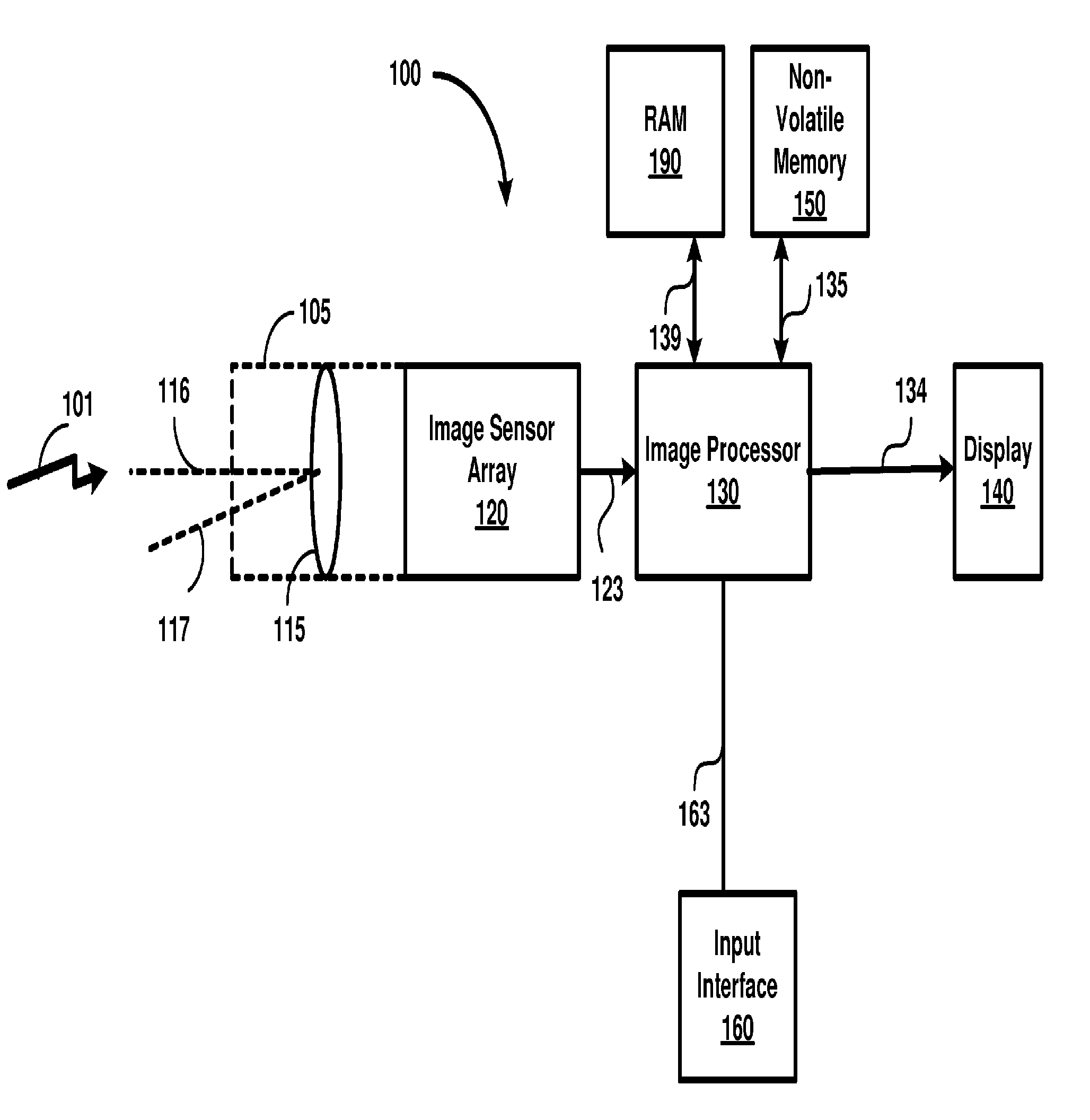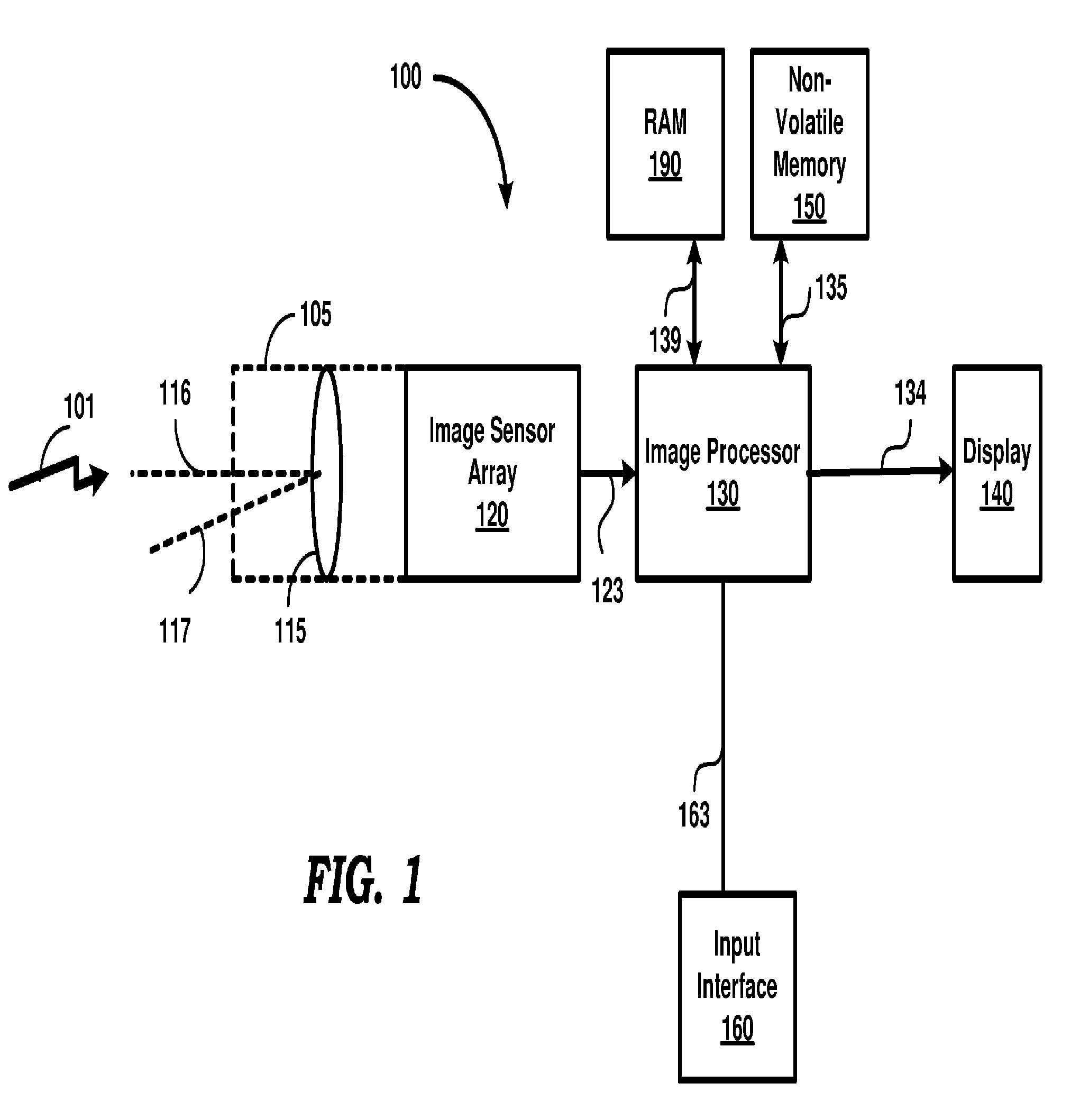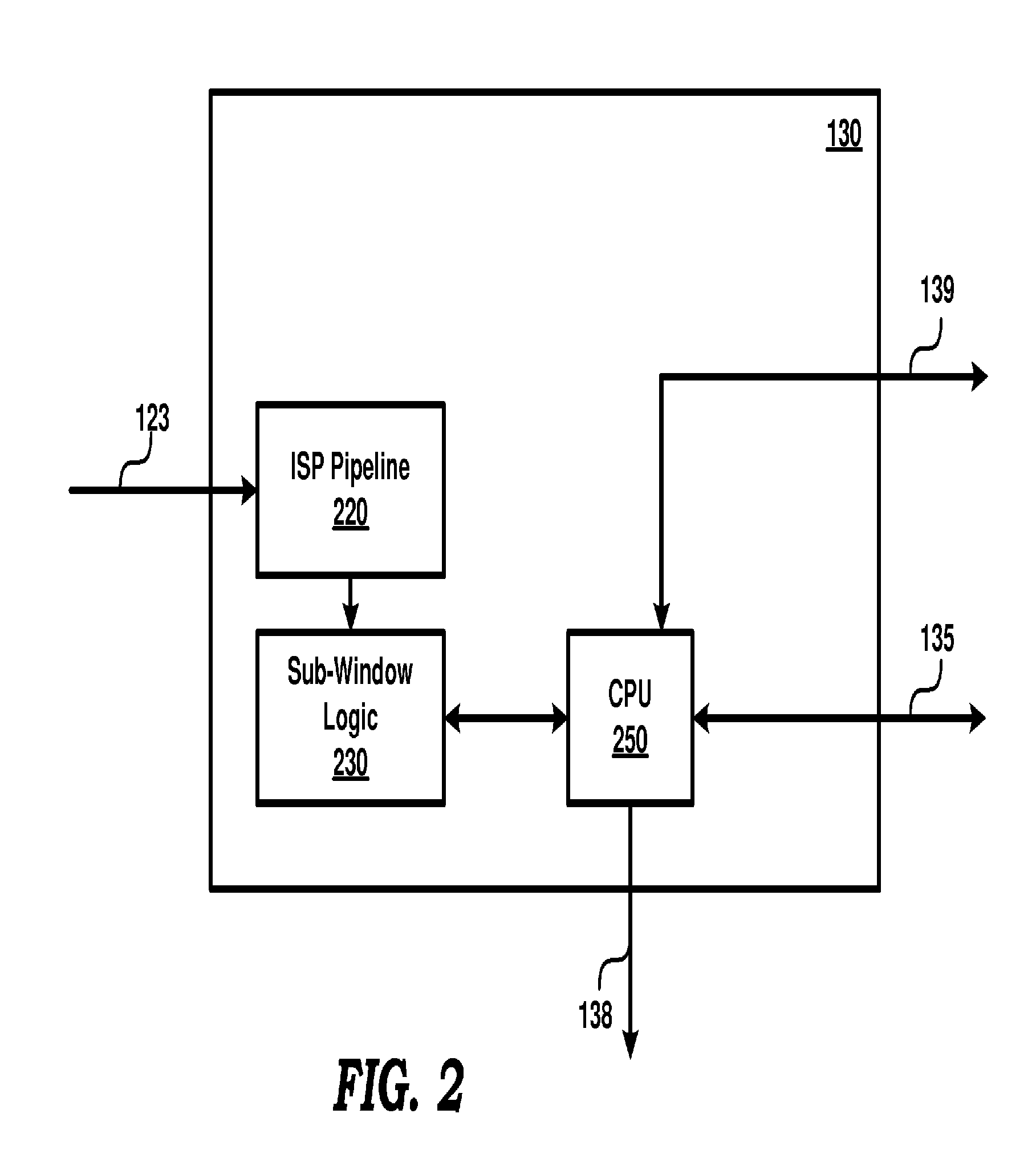Reducing computational complexity in determining an illuminant of a scene
a technology of scene illumination and computational complexity, applied in the field of image processing, can solve the problem that approaches often require substantial processing resources
- Summary
- Abstract
- Description
- Claims
- Application Information
AI Technical Summary
Benefits of technology
Problems solved by technology
Method used
Image
Examples
example implementation
6. Example Implementation Using a Subset of Pixels
[0065]As noted above with respect to step 410, a subset of the received pixels is first selected (within an area of a received frame). Example approaches to selection are depicted in FIGS. 5A-5E, and these represent fixed patterns. In each of the Figures, 8.times.8(=64) pixels of an image frame are shown, and the shaded area represents pixel values that are included in the subset and the white (non-shaded) areas represent pixel values that are not included. The patterns in FIGS. 5A-5E are respectively referred to as checker board pattern, modified checker board pattern1, modified checker board pattern2, sub-sampling by 2 pattern and inverse sub-sampling by 2 pattern.
[0066]The match information corresponding to step 440 may be represented as logically shown in FIG. 6. FIG. 6 corresponds to the match information generated from the pattern of FIG. 5A. In comparison to FIG. 5A, each shaded area of FIG. 6 is shown with a 0 (no match) or 1...
PUM
 Login to View More
Login to View More Abstract
Description
Claims
Application Information
 Login to View More
Login to View More - R&D
- Intellectual Property
- Life Sciences
- Materials
- Tech Scout
- Unparalleled Data Quality
- Higher Quality Content
- 60% Fewer Hallucinations
Browse by: Latest US Patents, China's latest patents, Technical Efficacy Thesaurus, Application Domain, Technology Topic, Popular Technical Reports.
© 2025 PatSnap. All rights reserved.Legal|Privacy policy|Modern Slavery Act Transparency Statement|Sitemap|About US| Contact US: help@patsnap.com



